As per modern research, when our eyes get connected with a color, our brains would release various chemical that impact our physical and emotional level. Rather, colors not only affect our moods but also our productivity.
Color therapy has been, for many years, practiced in conventional healing professions, but recently, more businesses have also availed color to shift employee moods. If you learn a little about attributes of each color, you can use that information to stimulate the atmosphere at your workplace.
Color qualities
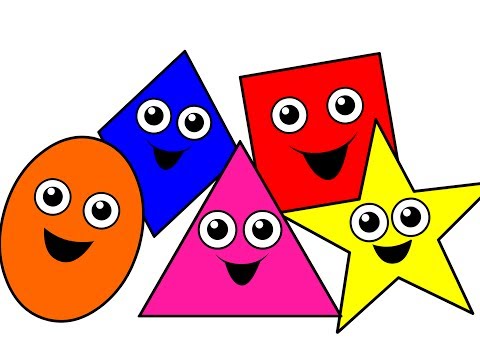
Red
Red is related to high power and energy. This color signals ambition, courage and strength. It stimulates speed and alertness, and associates us with our physical self.
Red can help develop confidence and move us forward when we need be task oriented or active.
Still, if there is excessive red, people can experience hostility, irritation or anger. Commonly, red works best as an accent color instead of being the primary color in decoration.
Orange
Orange color is inviting, warm and joyful. It inspires feelings of happiness, sociability and enjoyable connection. It helps boost up extroverted behavior – an amazing color to use in the gathering space to encourage interaction and building relationship.
As orange includes red, too much of this color (or an orange that is too intense or bright) can stirs up overwhelming, frustrating or irritating feelings.
Yellow
Yellow signals brightness, optimism, mental clarity and cheery attitude. It helps promote clear, creative, upbeat thinking and decision making. This color can work to ease depression and induce laughter.
Still, as shown in studies, over-exposure to this color, especially deep and intense yellows, can arouse irritability, hyperactivity, crying, and can cause hot temper.
Green
Green is an enormously pleasing color. It has many just-so-wonderful qualities – promoting balance, renewal, peace, and refreshment – which give a calming effect and help alleviate stress. An excellent way to bring green into your workplace spaces is with indoor plants.
While there isn’t too negative aspect to excessive green, this color can encourage laziness and lack of initiative if it’s overused.
Blue
Blue invokes calm and rest. It’s a really popular color; most of people will respond that blue is their favorite color. Blue does a fantastic job as promoting a deep relaxing sleep. It also can help encourage imagination and intuitive thinking.
Unlike other colors, higher amounts of blue can, commonly, be tolerated. Yet, this color is cool, and excessive blue can turn feelings into pessimism, apathy, or separation. Balancing blues with a warmer color is a nice idea for gathering spaces.
Violet
Violet promotes areas of problem solving in our brain, invokes intuition, creativity and artistic ability. In design, this color conveys sophistication and richness. Overusing violet may induce feelings of emotional suppression or insecurity.
So what colors are more likely to motivate employees and boost productivity?
Orange
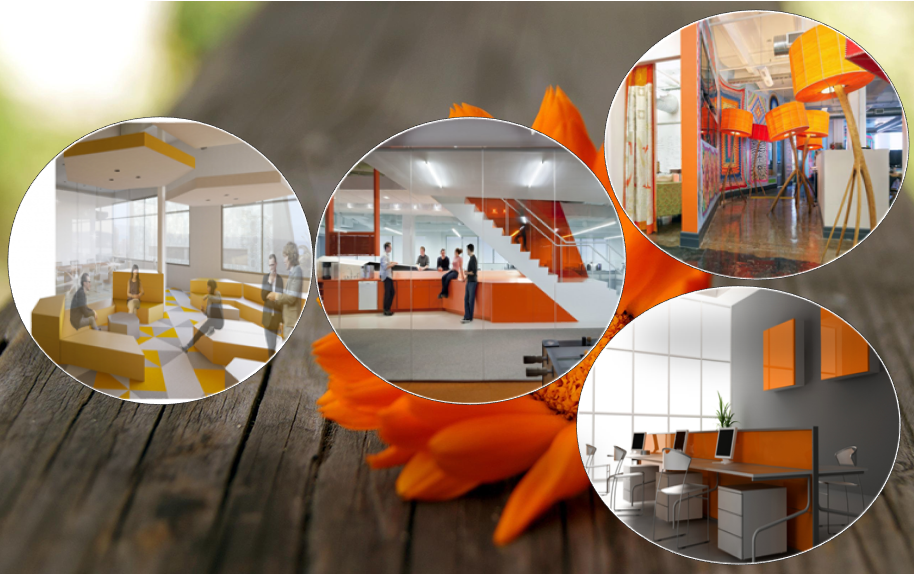
This is an operative color. Many gyms and health experts use this color as it promotes energy and production. You should spread generously orange in your staff work area. As shown in studies, even if people are weary, spattering the walls with a nice dose of this color will get them feeling revived, working. Then try orange in your offices, think-tank areas, and anywhere expecting brainstorming or production.
Blue
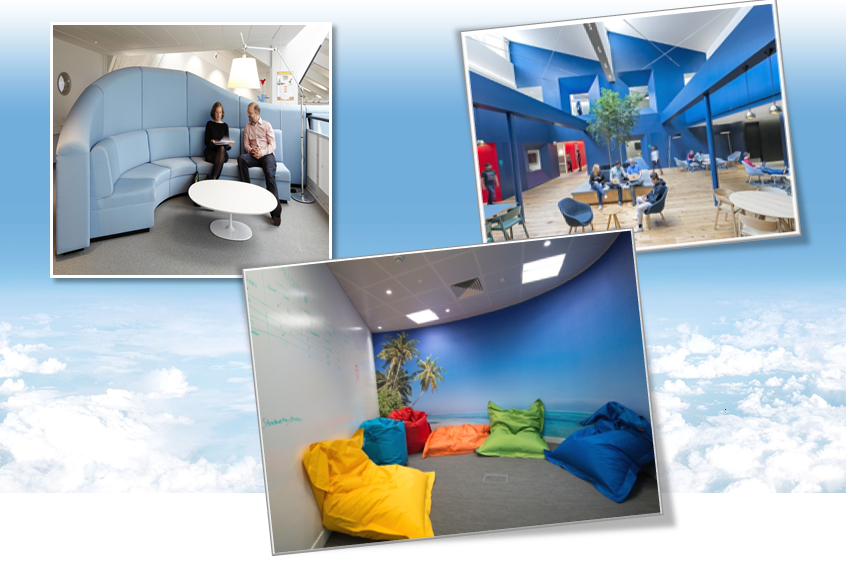
Unlike red, blue slows down your heart rate, and helps let out calming endorphins throughout your body. It’s a great color to have in lunch or break room though, it’s not a good option in any production areas. It would be helpful in a meeting room or in anywhere that being calm is important. This color is a fantastic choice for an outside wall near a patio, a restroom, or a waiting room. Then while blue will calm your workers, many of its versions may also send them to sleep.
Green
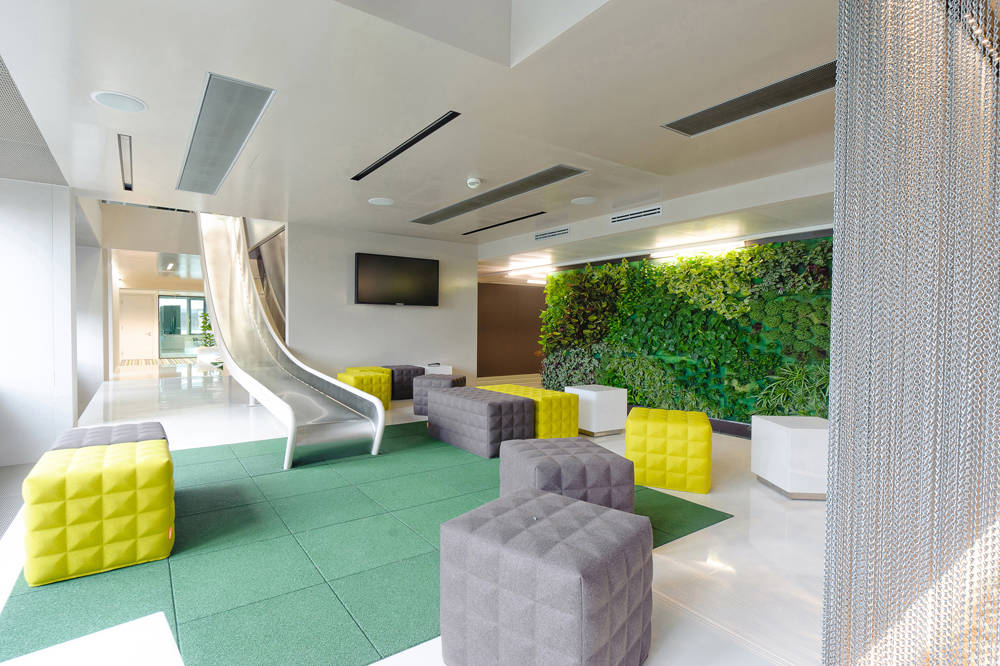
Green is such a stabilizer. All versions of this color are likely to calm nerves, just as blue does, but it doesn’t cause the sleepy impact that blue can have. Green is another fantastic color in cafeteria or lunchroom, as it helps revive the nervous system. If your workers are feeling like they truly took a break during the lunch of coffee time, they will come back to their work with relaxed mind, refreshing feel and be prepared to take on bigger tasks.
Red
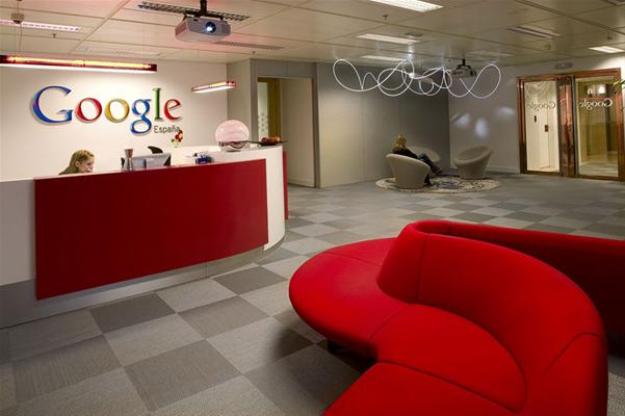
If your employee task or job involves physical activity, then red is color of productivity. It has been shown to raise blood flow, heart rate, and promote emotion and passion. If there is something in the office that you want to get attention, then paint it this color.
What about you? What colors have you brought into your workplace? How about their effects? Share with us!












Replies to This Discussion